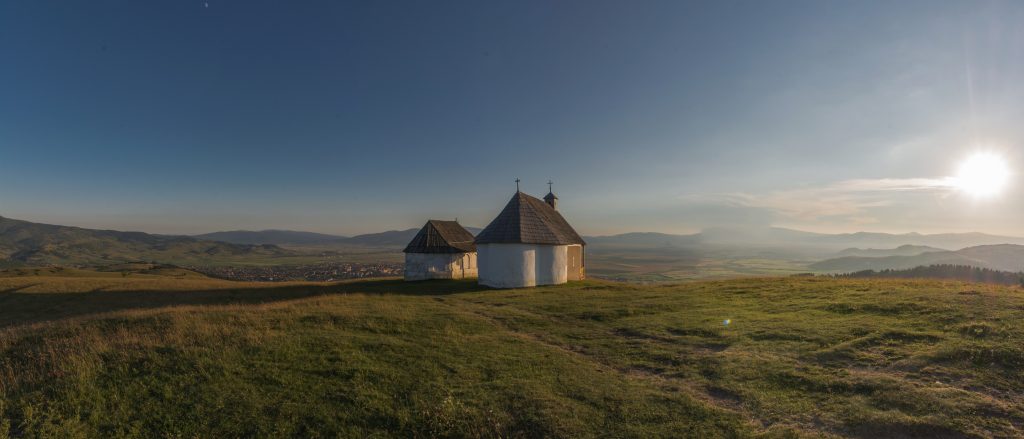There are places in Transylvania to which going by car simply kills the experience. Such spaces are the top of the hills where chapels are built. No matter which time of the year you arrive there, visiting these sites equates to traveling back in time. If you walk toward those sacred spaces and open your senses, you’ll feel its vibration given by the variety of sounds, shapes, and colors, and time stops for a moment. Below, we will show you three such chapels located in the Gyergyó/Gheorgheni- and Csík/Ciuc basins.
The chapels are modest buildings built by a family or a small group of people, which is why they are much smaller than churches. The chapels feature just a few ornaments, a handful of frescoes, and they were built using modest materials such as wood or stone. Unfortunately, the simple building process left only small traces of data, mostly available in the domus historia (the history of the church’s building) of the settlements’ parish.
The Saint Philip and Saint Jacob chapel located in Csíkrákos/Racu, just 10–12 km from Csíkszereda/Miercurea-Ciuc, is said to be from the eighteenth century, but a deeper look into the documents reveals that it was built much earlier. Documents from 1652 already mention the execution of renovation works on this chapel and based on the style of its windows we can set its origins between the fourteenth-sixteenth centuries.

Just 22 km away from Csíkszereda/Miercurea-Ciuc, in Csíkszenttamás/Tomeşti, where the brooks of Bábassz and Szádok flow into the Olt river, we find the Saint Anne chapel. It was built in 1592, renovated in 1861, and consecrated again in 1872. In 1935 one hundred acacia trees were planted, and some of them have survived the past 84 years. If you walk up to the chapel, you can enjoy a stunning view of Csíkszenttamás, the Truncated Tower, and the Harghita mountains.

In the northern part of Gyergyószentmiklós/Gheorgheni, at an altitude of 1087 meters on the Csobot mountain, you can find two sister chapels, both carrying the name of Saint Anne. The chapel on the right was likely built in the thirteenth or fourteenth century as a typical quatrefoil rotunda. The baroque part was built later in the eighteenth century, leaving three apses untouched. The second chapel was built in the eighteenth century in memory of the people who passed away because of the black death epidemic.

The people of Szentmiklós consider this chapel a pilgrimage site, and they arrive here two times each year: at dawn on Easter Sunday and on Saint Anne’s feast day. Their message to everyone visiting this site: brotherhood between nations – in this case, the eternal brotherhood between Szeklers and Armenians.
While the Roman Catholic Saint Anne chapel was restored in 2010, thanks to the joint effort of Gyergyószentmiklós’ inhabitants and the architecture firm Larix Studio, the Armenian chapel still awaits similar treatment.
Text: István Fekete and Vajk István Szigeti.